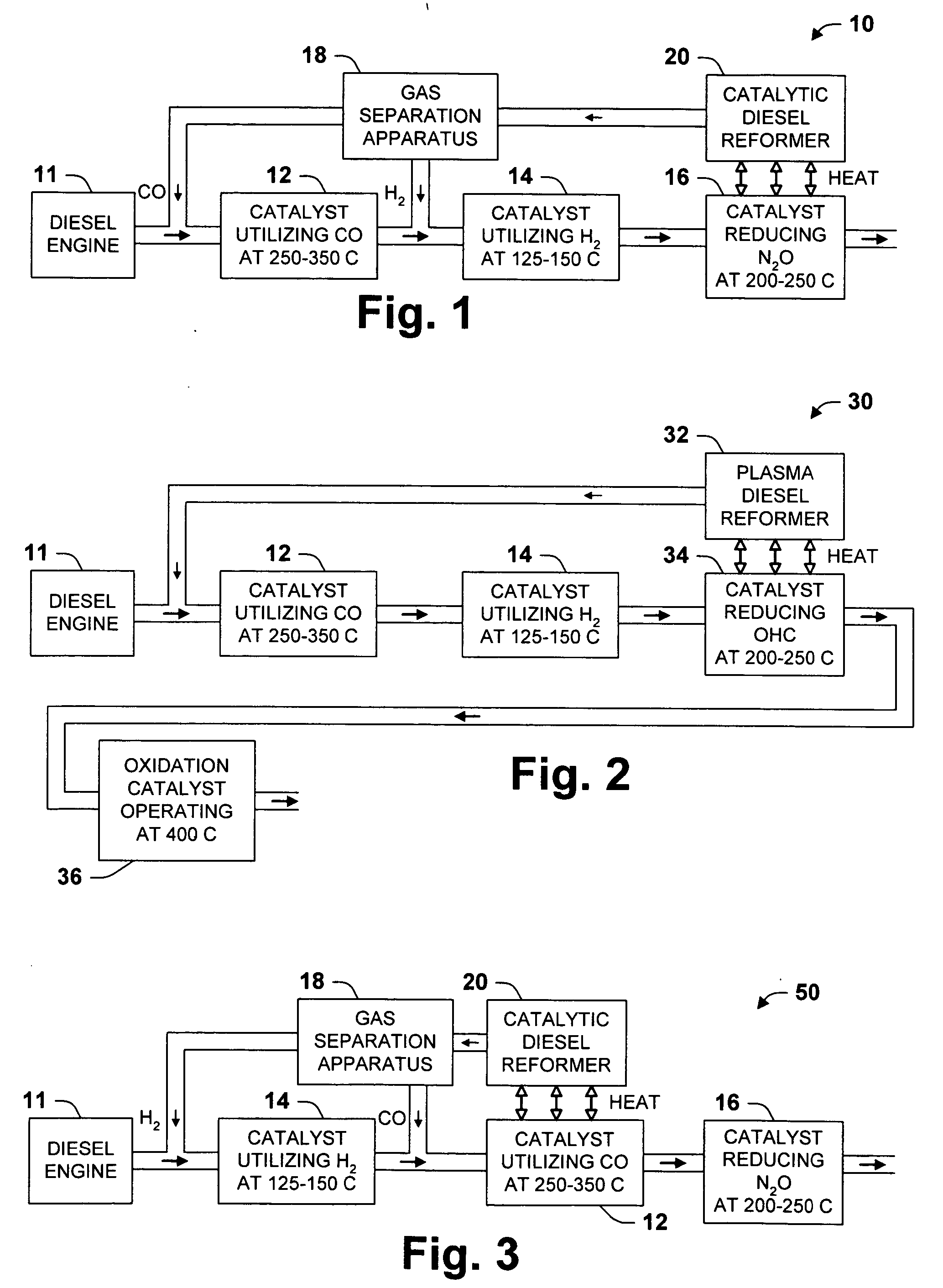Multiple reactant multiple catalyst selective catalytic reduction for NOx abatement in internal combustion engines
a technology of multiple catalysts and catalysts, which is applied in the direction of machines/engines, mechanical equipment, separation processes, etc., can solve the problems of excessive meeting effort, exhaust is too oxygen-rich for three-way catalysts to be effective, and the concentration of nox is reduced. , the effect of reducing the fuel penalty
- Summary
- Abstract
- Description
- Claims
- Application Information
AI Technical Summary
Benefits of technology
Problems solved by technology
Method used
Image
Examples
Embodiment Construction
[0018] The invention provides exhaust treatment systems for removing NOx from oxygen-rich exhaust. NOx includes, without limitation, NO, NO2, and N2O2. The invention functions by reducing NOx to N2 and / or N2O in an oxygen-rich environment using at least two separate lean-NOx catalysts. One catalyst is adapted to reduce NOx by catalyzing a reaction with a first reductant species while the other is adapted to reduce NOx by catalyzing a reaction with a second, distinct reductant species.
[0019] The invention is based on the observation that lean-burn NOx catalysts are each generally adapted to catalyze reduction with only one reductant species. The inventors have concluded that it is more efficient to use multiple lean-burn NOx catalyst rather than an equal (in some sense) amount of one lean-burn NOx catalyst. One potential advantage is that available reductants unutilized by single-catalyst systems can be taken advantage of, reducing the fuel penalty associated with exhaust treatment ...
PUM
| Property | Measurement | Unit |
|---|---|---|
| Fraction | aaaaa | aaaaa |
| Fraction | aaaaa | aaaaa |
| Temperature | aaaaa | aaaaa |
Abstract
Description
Claims
Application Information
 Login to View More
Login to View More - R&D
- Intellectual Property
- Life Sciences
- Materials
- Tech Scout
- Unparalleled Data Quality
- Higher Quality Content
- 60% Fewer Hallucinations
Browse by: Latest US Patents, China's latest patents, Technical Efficacy Thesaurus, Application Domain, Technology Topic, Popular Technical Reports.
© 2025 PatSnap. All rights reserved.Legal|Privacy policy|Modern Slavery Act Transparency Statement|Sitemap|About US| Contact US: help@patsnap.com

